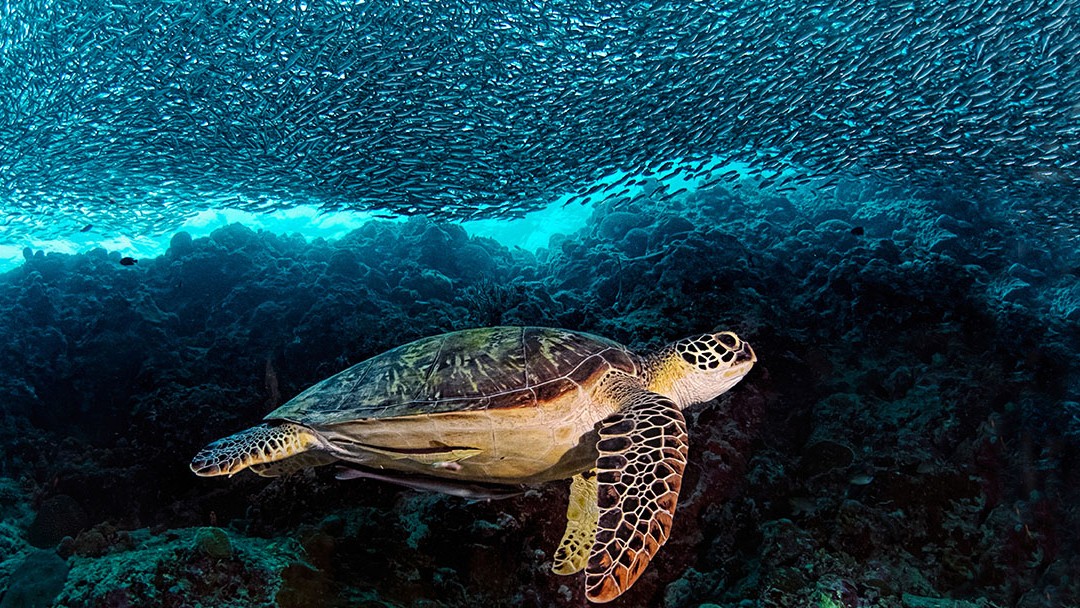
Whether air, water, or land, and whether food, raw materials or biodiversity – humanity is straining the limits of the Earth’s capacity. It is all the more important that we make development progress in environmentally and climate-friendly ways. This is KfW’s commitment.
The numbers are alarming: one million species threatened by extinction, 150 million tonnes of plastic waste in the world’s oceans, deforestation covering areas as large as England every year, 80% of wastewater is untreated, the majority of all city residents suffer from bad air quality. Meanwhile, the sea level is rising, agricultural areas are shrinking and extreme weather events are on the rise due to global warming. At the same time, one in every ten people still lives in extreme poverty. Consumption requirements and pent-up demand are considerable in many areas of the world. This increases the pressure on natural resources. Especially because the world population continues to increase: there will probably be around 10 billion people on Earth by 2050.
It will not be possible to meet the increasing demand for food, water, goods, places to live and mobility with previous models without endangering humanity’s survival and destroying existing ecosystems. So the only remaining solution is to reconcile economies with environmental protection and climate change mitigation. This combination was also codified in the United Nations’ Sustainable Development Goals (SDGs) from 2015 and provides a clear framework for all activities of German development cooperation including those of KfW Development Bank. So, for example, forest conservation is a matter of particular importance for KfW. Deforestation is one of the largest sources of greenhouse gases at 20%. Forest area equivalent to the size of a football pitch is destroyed every two seconds. So its protection plays a key role in climate change mitigation. KfW is taking countermeasures in the form of reforestation programmes like the ones in Madagascar or Vietnam. But these programmes do more than just plant trees; they also help to restore entire forest landscapes. Reforesting deforested areas is supplemented with agriculture and management of existing forests. Agroforestry systems used for things like cocoa or coffee farming play a special role here. KfW also supports compensation programmes that reward conservation so that forests are not destroyed in the first place, emitting CO2. It is nearly impossible to stop logging and natural resource depletion without providing alternative income, especially in poor areas. So the local population receives funds if they clear less forest in their region and thus protect the climate. This is an approach KfW has been using in Brazil, Ecuador and Colombia. KfW is also concerned with protecting the world’s oceans. The oceans absorb over a third of the carbon dioxide humanity emits and are an important carbon sink that needs to remain intact. And given the fact that nearly half of humanity lives on or near the coast and is financially or nutritionally dependent on fishing, KfW is committed to marine conservation at a global level. In 2017, we founded a trust together with the German Federal Ministry for Economic Cooperation and Development (BMZ) for international marine conservation. The Blue Action Fund (BAF) promotes new conservation areas, sustainable fishing and environmentally friendly tourism, among other things. Sweden and France have since also joined the BAF.
Reducing emissions of climate-damaging gasses or sequestering them in forests and oceans is important but is not enough. Because today, we already know that the Earth’s temperature will rise despite all efforts, which will have farreaching effects, primarily on many developing countries: whether droughts or floods, heavy rains or record temperatures, poor countries are the ones most affected by climate change – and they rely on international support. So KfW is also promoting adjustment measures all over the world, for example in Peru. The glaciers in the high mountain regions there function as the service reservoir for the majority of the Peruvian population, which primarily lives in dry coastal regions. The problem is that these glaciers are already melting at drastic rates. So KfW is helping local suppliers to use water more efficiently so that they will also be able to manage the supply in the age of climate change. On the other hand, KfW promotes coastal preservation with walls and embankments in Tunisia so the country does not lose land to rising sea levels. Those are just a few of the measures included in the many adjustment activities. One thing is clear: organising progress in a way that is climate-friendly is one of KfW’s overarching objectives – and is thus also one of the main issues its mission will focus on in the years and decades to come.
Share page
To share the content of this page with your network, click on one of the icons below.
Note on data protection: When you share content, your personal data is transferred to the selected network.
Data protection
Alternatively, you can also copy the short link: https://www.kfw-entwicklungsbank.de/s/enzBXVuJ
Copy link Link copied